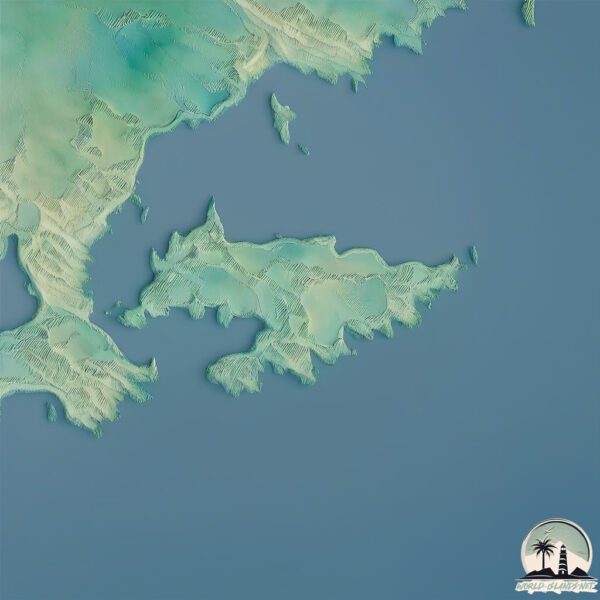Kii Ōshima

Welcome to Kii Ōshima, a Temperate island in the Philippine Sea, part of the majestic Pacific Ocean. This guide offers a comprehensive overview of what makes Kii Ōshima unique – from its geography and climate to its population, infrastructure, and beyond. Dive into the details:
- Geography and Size: Explore the island’s size and location.
- Climate and Weather: Weather patterns and temperature.
- Topography and Nature: Uncover the natural wonders of the island.
- Infrastructure and Travelling: Insights on reaching, staying, and making the most of your visit.
- News and Headlines: Latest News.
Geography and size of Kii Ōshima
Size: 9.687 km²
Coastline: 25.8 km
Ocean: Pacific Ocean
Sea: Philippine Sea
Continent: Asia
Kii Ōshima is a Small Island spanning 9.7 km² with a coastline of 25.8 km.
Archipel: Japan – An East Asian archipelago comprising four main islands and numerous smaller ones, known for its rich history, technological advances, and distinct culture.
Tectonic Plate: Amur – A minor tectonic plate in the region of the Amur River at the border of Russia and China, involved in complex interactions with the Pacific and Eurasian plates.
The geographic heart of the island is pinpointed at these coordinates:
Latitude: 33.4664592 / Longitude: 135.82837489
Climate and weather of Kii Ōshima
Climate Zone: Temperate
Climate Details: Humid Subtropical Climate
Temperature: Hot Summer
Climate Characteristics: With continuous rainfall and hot summers, this climate is common in some coastal regions, supporting diverse vegetation.
Topography and nature of Kii Ōshima
Timezone: UTC+09:00
Timezone places: Asia/Tokyo
Max. Elevation: 120 m
Mean Elevation: 51 m
Vegetation: Evergreen Broadleaf Forest
Tree Coverage: 96%
The mean elevation is 51 m. The highest elevation on the island reaches approximately 120 meters above sea level. The island is characterized by Plains: Flat, low-lying lands characterized by a maximum elevation of up to 200 meters. On islands, plains are typically coastal lowlands or central flat areas.
Dominating Vegetation: Evergreen Broadleaf Forest
Characterized by dense, lush canopies of broadleaf trees that retain their leaves year-round. These forests are typically found in tropical and subtropical regions and are known for their high biodiversity. Kii Ōshima has a tree cover of 96 %.
Vegetation: 5 vegetation zones – Highly Diverse Island
With five different vegetation zones, these islands offer a rich tapestry of ecosystems. The variety could include dense forests, open meadows, wetlands, coastal zones, and more. This level of diversity supports an intricate web of life, with each zone playing a vital role in the overall ecological health and balance of the island.
Infrastructure and Travelling to Kii Ōshima
Does the island have a public airport? no.
There is no public and scheduled airport on Kii Ōshima. The nearest airport is Nanki Shirahama Airport, located 53 km away.
Does the island have a major port? no.
There are no major ports on Kii Ōshima. The closest major port is SHINGU, approximately 25 km away.
The mean population of Kii Ōshima is 127 per km². Kii Ōshima is Moderately Inhabited. The island belongs to Japan.
Continuing your journey, Ō Shima is the next notable island, situated merely km away.
Japan is classified as Developed region: G7: Group of Seven – Major advanced economies, including Canada, France, Germany, Italy, Japan, the United Kingdom, and the United States. The level of income is High income: OECD.
News – Latest Updates and Headlines from Kii Ōshima
Stay informed with the most recent news and important headlines from Kii Ōshima. Here’s a roundup of the latest developments.
Please note: The data used here has been primarily extracted from satellite readings. Deviations from exact values may occur, particularly regarding the height of elevations and population density. Land area and coastline measurements refer to average values at mean high tide.
